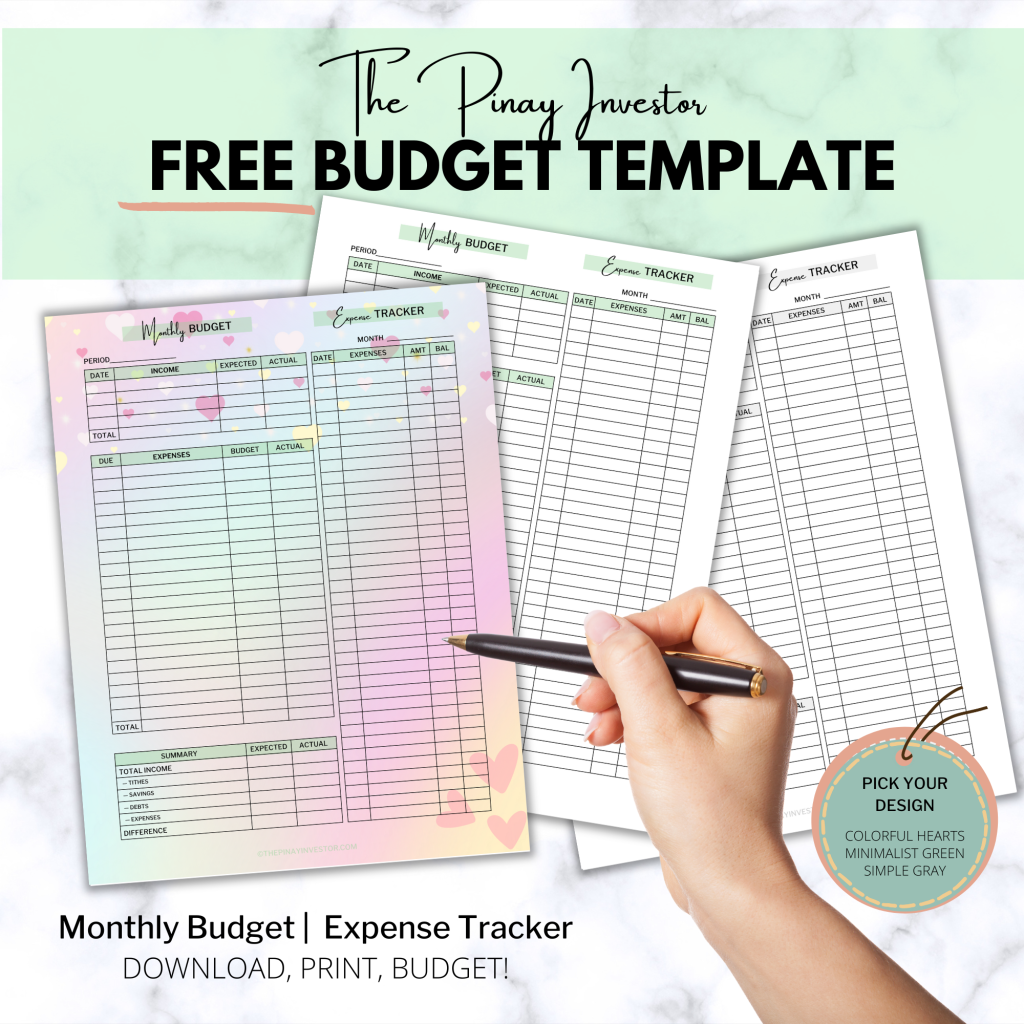Payday is here!
If you’re one of those who receive their salary twice a month—maybe on the 15th and 30th, or the 5th and 25th—you’re probably excited about your bank account getting a nice boost today, August 15th.
But before you dive into the usual routine of paying bills without a clear plan, let’s talk about something that could change the way you handle your money: budgeting.
Why Budget?
Think of a budget as your money’s roadmap. Instead of letting your paycheck dictate where it goes—often leaving you wondering where it all went—let’s flip the script.
You should be in control, telling your money exactly where to go.
Most people spend without a plan, and before they know it, their money seems to have a mind of its own.
But it doesn’t have to be that way. With a budget, you’re the boss.
Getting Started
Creating a budget doesn’t have to be complicated. All you need is a few minutes and some basic tools.
Grab a piece of paper or a simple notebook, which costs about ₱30, and a pen for ₱20. That’s just a ₱50 investment towards financial empowerment!
If you prefer digital tools, your phone’s notes app or Google Sheets works just fine.
The key is to start, not to be perfect.
![]()
Step 1: Know Your Income
Where does your money come from? Salary, freelance gigs, side hustles, or maybe family remittances? List it all out and get a clear picture of your total income.
For example, if your salary is ₱15,000, write it down:
- INCOME: ₱15,000
Step 2: Know Your Expenses
Now, let’s figure out where your money needs to go. Start with essentials like rent, electricity, water, and internet.
Remember, timely payment of these bills is crucial—going to work without a shower isn’t fun, and let’s be honest, Internet is life!
Next, budget for food and groceries. Be realistic here; you don’t want to survive on hotdogs and Lucky Me pancit canton for two weeks. Tracking your expenses is important so you know how much you typically spend on essentials like food, groceries, and even online deliveries.
If you have debts, make sure to pay them on time. For credit card debts, aim to pay in full, or at least above the minimum payment. Ignoring debts only makes them grow, burying you deeper and delaying your journey to financial freedom. No one wants to constantly worry about money, so prioritize paying your debts.
Here’s a sample budget.
- EXPENSES: ₱14,000
- Rent – ₱3,000
- Electricity – ₱1,000
- Water – ₱300
- Internet – ₱1,400
- Food & Groceries – ₱3,000
- Transpo & Allowance – ₱3,000
- Fun Money – ₱1,300
- Debt – ₱1,000
Step 3: Save What’s Left
If you have money left after covering essentials and debts, set aside some for savings.
For beginners, I recommend using the formula:
- Income – Expenses = Savings
This approach is less overwhelming and more realistic, especially when you’re just getting started.
In our sample budget, it looks like this:
- ₱15,000 (Income) — ₱14,000 (Expenses) = ₱1,000 (Savings)
Many financial advisors recommend saving first, but this can be discouraging for beginners who feel like their income barely covers their expenses.
Have you ever heard someone say, “Kulang pa nga ang income sa expenses, paano pa magsa-save?” (“My income isn’t even enough for my expenses, so how can I save?”)
It’s a valid concern! If you’re struggling to cover essentials, saving can feel like an impossible task.
That’s why it can be helpful to start by focusing on your expenses first. This approach allows you to ease into the budgeting process without the pressure of saving right away.
Once you get into the habit of budgeting and become more aware of where your money goes, you can gradually transition to this formula:
- Income – Savings = Expenses
This way, you can build a foundation of financial awareness and gradually work towards saving as your financial situation improves.
To help you get started in budgeting, you can download my free budget templates by clicking the image below:
Track your Spending
For the next 30 days, track your daily expenses. This will give you a clear picture of where your money is going and help you adjust your budget for the future.
If you budget P3,000 for food but find it’s not enough, don’t panic. Simply adjust your plan next time.
It’s also wise to leave some wiggle room for the unexpected—like treating yourself to a nice dinner or covering surprise expenses.
The goal is to stick to your budget while allowing for flexibility. Remember, your budget isn’t set in stone—you can always make changes as needed.
The Mindset Shift
Budgeting isn’t about limiting your freedom—it’s about empowering you to make thoughtful decisions about your money, both now and in the future.
It’s tempting to justify overspending with thoughts like, “I deserve this,” or “I’ll save more next payday.”
But remember why you’re budgeting in the first place. Are you working toward becoming debt-free? Saving for a dream home, a car, or a memorable family vacation?
Think of budgeting as the foundation for achieving your financial goals. It’s not just a tool to manage your money; it’s a strategy to help you live the life you want.
Embrace Budgeting
Don’t fear the word BUDGET. It’s your ally in taking control of your finances.
By budgeting, you gain peace of mind, knowing exactly where your money is going and what steps you need to take to improve your financial situation.
Remember, budgeting is a journey. Start simple, be consistent, and watch as you transform from being a slave to your money into its master. You’ve got this!
While some people eagerly await their salary or business income with excitement, others are weighed down by financial stress.
If you’re struggling to make ends meet, overwhelmed by debt, or facing a major financial setback, I know it feels tough—but there is hope.
Read my next blog post below for some practical steps and biblical encouragement to help you regain control and find hope during these challenging times.
Watch our August 15 Budgeting video


